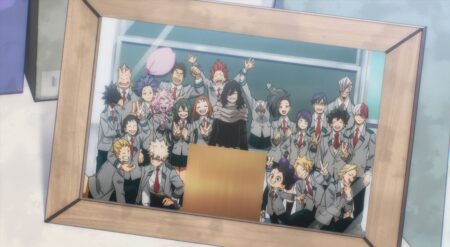Soulframe is Digital Extreme’s first new IP in over a decade. Embodying fantasy, this co-op adventure game has a deep emotional core and exciting combat that was highlighted at Tenno Con 2025. We got the chance to talk to Scott McGregor, Lead Designer on Soulframe, and Sydney Hills, Narrative Designer, about the upcoming game.
First on my mind was the multiplayer component of the game. At the same time, some outlets had reported that the game would be an MMO in style, and all of the videos and focus that had been communicated focused on single-player play. That is, until TennoCon’s 30-minute demo experience this year, which finally highlighted co-op play. We asked the developers how they approach making an immersive story work for one player and for two.
Sydney Hills explained, “I think the title of the envoy is honestly a really big part of it. We do the same thing in Warframe with the Tenno. It creates an individual identity, but also speaks to a larger group of people, a massive online community, and then an in-world group as well. So the envoy lends itself well to that single-player and multiplayer role, because, in theory, many, many envoys out in this world have all lost their memories and have all undergone the same spell song.”
She continued, “And so to be able to work all towards a common goal of reclaiming Midrath from the Odin occupation. It’s a perfect way to regain your identity and remember who you are as an individual, but also be able to sort of speak to a really large group, almost seeking the same goal.”
Soulframe is embracing every kind of player, from solo to co-op, the experience is aimed to fulfill both.

“From a design side,” Scott McGregor added, “I think most of the systems that we create have co op in mind. When we do deliver some of these quests, though, they are more single-player focused. And we usually tell players that this portion will be single-player only, but we can also place it where we can easily allow Co-Op and make it make sense. We do those things [in Soulframe].”
“One of the cool tricks that I love that we do is, in most of the cinematics, when they trigger, they pull your character into that moment. So even if it’s a single-player moment and someone else had triggered it, it’s your character that is experiencing that and with your customization and your stuff. Warframe does this as well, but doing it in Soulframe really makes it feel like a personal experience, and that’s your character going through this moment,” he explained.
During the 30-minute demo that Digital Extremes showed at TennoCon 2025, Soulframe immediately hooked me because of its aesthetic and how it wore its druidic and Celtic inspirations on its sleeves. Focused on healing nature, the demo was breathtakingly emotional, and a lot of that has to do with how the land is given significant importance.
When asked about the inspirations, Sydney Hills answered, “It is very Celtic, for sure. Midrath, the island, is kind of our pseudo-Western Europe, and we have lots of Scottish accents in the game. We [also] draw a lot, especially in one quest and the surrounding area that came out of that. We’ve drawn a lot from Scottish and Celtic traditions. I love to do my research and then put it into the written lore in the game.”

“There’s lots of meat to get into with those kinds of mythologies [in Soulframe], and then it leaves a really good kind of [runway] for the other places to go.”
But the inspiration didn’t stop in the writing; it also came through in deciding on Soulframe’s voice cast. “When we work with voice actors, we have a lot of Scottish voice actors come in for different roles in the hubs and around all of Midrath,” Hills explained.
“I got to learn a lot of Scottish slang and try to work that into the dialog, which it just adds a certain locality to the game. It’s kind of like you’re coming into it, and you have an idea of where [you’re standing in the world], and part of it is familiar to the real world, and part of it is this fantasy layering on top of it. It’s not Scotland, it’s Dendria, and they have Night Maidens, and they worship a giant Deer God.”
She continued, “There’s lots of meat to get into with those kinds of mythologies [in Soulframe], and then it leaves a really good kind of [runway] for the other places to go. Like, now, we have our character for Verminia, who’s more inspired by the Gaul tradition of France, and it also [represents] a bunch of other countries as well, [connected to the] druidic tradition. That’s where druid mythologies came from.”
One of the more exciting things in Soulframe is that, to progress through the chapters, you interact with Ancestors. The Envoy works through their stories and then channels them. But that also means that Soulframe can move beyond what we have seen so far in the Pre-Alpha Preludes version of the game.
Hills explained with much excitement, “Verminia’s role in the game as a witch, as well as her accent and the types of beliefs she holds about magic, are all drawn from a completely different part of Celtic mythology. I hope that as the game progresses, we can expand beyond just Celtic. There are Eastern mythologies we can get into, and we’re kind of toying with other Ancestors as well. It leaves so much room for different cultural inspirations that I think we’re all really excited to get into.”
Melee or ranged, Soulframe has a combat style to suit you.

Shifting away from inspiration and toward its target audience, Scott McGregor explained how Soulframe is setting up to meet both new players and veteran Warframe players who are used to how Digital Extremes crafts combat experiences. And for them, it was ensuring that there were different combat types to suit different players.
The Lead Designer explained, “I think the last [Preludes] update speaks to the fact that we spent a lot of time basically creating these sort of like three factions that support basically a different play style for each… We’ve spent a lot of development time on the melee combat system, and that’s been mostly what we’ve demonstrated to [Prelude] players currently.”
“But in development, we’ve added the bow, which then leans more [toward] the shooter type of player who likes to aim and stand back and pick their enemy. In that [weapons] rework, we also added a magic caster weapon, which is very casual-friends [because] it’s auto aim. It’s distance-based,” he continued.
By assuring that combat variety that takes into account skill, the Soulframe developers help make teams accessible to all players. McGregor added, “[Caster is] there for that player that doesn’t want a ton of [close-quarters] pressure and basically wants to experience the story and to be a part of a group. They don’t necessarily have to be mechanically good enough to play a hack-and-slash character that’s animation and frame-precise. [Those players] can stand back and be a caster and a healer and contribute to their group that way.”
“So I think having those avenues for different types of players is hugely important,” McGregor said. “I think Warframe did the same thing when we introduced different Warframes, we added different play styles in those. So we’re trying to build that into [Soulframe’s] base weapon classes, as well as on the pack side, which is the warframe equivalent. So on the casting side of things, you’ll have packs that are more hardcore and about DPS, and then you’ll have ones that are more about support, allowing those play styles is super important.”
The floppet is point of pride for Soulframe devs, and we can see exactly why.

We shifted the focus to look at what the developer duo were most proud of and excited for players to see in Soulframe. There is no feature too big or too small. To start, Hills answered with an adorable creature that made the audience erupt during the TennoCon 2025 Soulframe demo.
Without hesitation, Sydney Hills answered, “Without a doubt, it’s the floppet for me, 100 percent. I love that little creature so much. It came out of nowhere, and I think, as something Steve threw into a version of the script, as Verminia transforms a creature and she gives the rat wings. And I was like, ‘Oh, my God, yes, she would do that!’ I think people are going to love that little floppet, and I think they’re going to want to keep her.”
McGregor interjected, “The floppet will be with us for many, many years to come.” And if the fan response from TennoCon is any indication, he’s right. A hit with the crowd, and for me personally, the cute rat with rings has the perfect animation, and brings together the adorable ratio of classic chonky animals that people have come to love across mediums.
For Scott McGregor, his point of pride came from combat, and finally getting a specific piece of it just right. “I think for me,” he started, “I keep coming back to this one point, a recent sort of thing that finally clicked in the game, and its the magick ping pong that we have going on with the Wazard battle, mechanically speaking. It was an idea of reflecting back the magick when you block, and that’s what works for the staff. And at first, it sort of worked but it also sort of didn’t. It was semi-useful.”
“[The magick ping-pong] has been in the game for a bit, and just recently, and with the wazard boss battle, it finally clicked. “We had the timing right, and we had the facts right, and we had the sound right, and it’s very satisfying to do. I think when players play that section and realize they can do that, I think it’s going to be a pretty fun thing for them to find out.”

“I never expected working in games where it’s often so fast-paced and so much about getting the most efficient information to the player, that I would be able to be able to write poems.”
By meeting all players where they want to be in terms of combat and developing a folkloric narrative, Hills and McGregor have put parts of themselves into the game while being mindful of the community they are hoping to reach and build around them. But when you put parts of yourself into your creations, you also learn a bit about yourself, when asked what they learned through Soulframe’s development process.
Sydney Hills answered first, “For me, I think [that I have] gotten to explore one of my favorite styles of writing, which is like poetry and prose, [professionally]. It’s always been something I’ve written for myself, and never anything that I’m trying to cater to people to read and understand. Because poetry, I think, is very existential. It’s very wishy washy, you know? [You’re] saying something without saying anything at all.”
But poetry and magick go hand in hand, and it’s something that the Hills embraced as a Narrative Designer on Soulframe. She continued, “I never expected working in games where it’s often so fast-paced and so much about getting the most efficient information to the player, that I would be able to write poems. It’s something that I’m so excited about and love writing so much.”
“To be able to work with Steve, who is a really good writer and a really great poet as well, to be able to bounce ideas off of him and to put it into the identity of the game—it’s this romantic, kind of flowy, prosaic over the top [of Soulframe]. I guess [working on the game] opened up a side of me that I didn’t think was going to be public, if that makes sense. I’ve been able to share a part of me to such a wide audience that I never thought I would.”
When it comes to asking developers this question, or any creative really, it always hits us hard. More importantly, it highlights the importance of understanding the people behind the video games that we love. Because, as Xalavier Nelson said in our 2024 interview, “people make games. Scott McGregor’s response was no less heartfelt, only instead of sharing a part of himself through Soulframe, he highlighted how impactful the community sharing themselves with the development team via social media and at TennoCon has been to him.
People are at the heart of video games, and the community and the developers work together.

He started, “I worked on Warframe for a lot of years, and that community interaction and involvement—the feedback loop of when you work on something and you get sort of that immediate feedback from the community that inspires the design, or you see people’s reaction to the stuff that you made so quickly—has become a part of me. That had become such a core part of how I worked for a lot of years, and then, as my time on Warframe started to wrap up, and I started to pull away from the project a bit more and start working on Soulframe, I really missed it.”
“I think now that Soulframe is ramping up, and we’re getting a wider audience and more of that community interaction, I find that I’m really enjoying seeing how people react to what we make. It’s satisfying professionally and emotionally, and [the community and feedback], seeing that happen, it really is a big part of the way I love to work,” McGregor said.
“I didn’t really realize how much it was until it went away. So, coming back, I’m starting to feel like,” he paused for a second. “This is why we do it. This is why we make these things. It’s fun to make [games], but it’s fun to see people react and play it and experience it as well. And that’s why we make interactive games, and where the satisfaction comes from.” Wiping his eyes, McGregor ended, “I’m tearing up here, guys.”
McGregor’s point is an important one. In such an online world, which isn’t always kind, it is easy to want to silo yourself when you play games. But ultimately, video games do connect us to others. While we can simplify that to the people we meet and the relationships we foster through multiplayer games like Warframe or Soulframe, they also connect us to the developers who made these worlds for us to find solace in.







![[EXCLUSIVE] ‘Invincible VS’ Devs Dive Deep Into Their New Original Character: Ella Mental Ella Mental in Invincible VS](https://butwhytho.net/wp-content/uploads/2025/12/Invincible-VS-Ella-Mental-But-Why-Tho-1-450x247.jpg)